Kisaeng
 From Nwe
From Nwe | Kisaeng | ||||||||
|---|---|---|---|---|---|---|---|---|
 |
||||||||
| Korean name | ||||||||
|
Kisaeng (also spelled gisaeng), sometimes called ginyeo (기녀), refers to female Korean entertainers similar to the Japanese geisha and the ancient Greek hetaerae. Kisaeng were not prostitutes but, rather, artists. Although many casual observers mistook kisaeng as prostitutes in Korea, kisaeng entertained aristocracy or royalty, such as the yangbans and kings, as artists.
First appearing in the Goryeo Dynasty, kisaeng served in the government as entertainers, required to fill a variety of roles. In addition to entertainment, those roles included medical care and needlework. Many worked in the royal court, but they also served throughout the country. They received careful training, frequently achieving accomplished in the fine arts, poetry, and prose, although nobility often ignored their talents due to their inferior social status.
Kisaeng, both historic and fictional, play an important role in Korean conceptions of the traditional culture of the Joseon Dynasty. Some of Korea's oldest and most popular stories, such as the tale of Chunhyang, feature kisaeng as heroines. Although the names of most real kisaeng have been forgotten, history records a few for outstanding attributes, such as talent or loyalty. Kisaeng Hwang Jin-i represents the most famous.
Social position
Throughout the Goryeo and Joseon periods, kisaeng held the status of cheonmin, the lowest rank of society. They shared that status with other entertainers, as well as butchers and slaves. Women inherited the kisaeng status, so the children of a kisaeng also had cheonmin status, and the daughters automatically became kisaeng as well.[1] Beginning in the Goryeo period, the governing offices in each district kept a registry of kisaeng to ensure thorough oversight.[2] The government followed the same practice as with conscripted slaves. Only a wealthy patron, typically a high government official, could release a kisaeng from their position if he paid a hefty price to the government.[3]
Many kisaeng displayed skill in poetry, numerous sijo composed by kisaeng have survived. Those often reflect themes of heartache and parting, similar to poems composed by scholars in exile.[4] In addition, kisaeng composed some of the most famous poems to persuade prominent scholars to spend the night.[5] Indeed, Koreans typically associate the sijo style with kisaeng women, while women of yangban status focused on the gasa form.[6]
Kisaeng attached to a local government office went by the name gwan-gi, their status carefully differentiated from that of the common slaves also attached to the office. The government officials entered them separately on the census rolls. Although regarded of significantly higher status than slaves, kisaeng and slaves still both received cheonmin rank.[7]
Career
Most kisaeng had an extremely short careers, generally peaking at age 16 or 17, and ending by age 22.[8] Only a few kisaeng maintained their profession beyond that age. For that reason, Kisaeng training institutes accepted entrants as young as eight-years-old.[9] The government required all kisaeng, even those who worked in non-entertaining tasks, to retire at age 50. Becoming the concubine of a patron represented the best prospect most kisaeng had for long-term support. That represented an option only if their patron first purchased them from the state, an option few men of the Joseon period could afford. Thus, most former kisaeng went on to work in or managed a local tavern.[10]
In the later period of Joseon, a three-tiered system developed.[11] Haengsu (행수,行首), who sang and danced at upper-class feasts, occupied the highest tier. Law required that Haengsu kisaeng retire from entertainment after they turned 30.[12] They could continue working in other duties, such as dressmaking and medicine, until the age of fifty.[13] They received guests only by choice. Most of the kisaeng of the court occupied the highest tier, haengsu or seonsang (선상).[14] The haengsu kisaeng of each district also took charge of discipline and training new kisaeng.
In the course of their careers, some kisaeng amassed considerable personal wealth—they represented the exception. Kisaeng had to cover their expenses, including food, clothes, and makeup, out of their own personal funds.[15] Kisaeng of the lowest tier had the name samsu (삼수, 三首). The government forbade samsu to perform the songs and dances of the haengsu.[16] The tiered system, like other aspects of Joseon class division, broke down in the late nineteenth century.[17]
Becoming a kisaeng
Women entered the kisaeng class through various paths. Some, the daughters of kisaeng, inherited their mother's status. Parents unable to support daughters sold them into gijeok.[18] Most of these families held the designation of cheonmin, but sometimes poor families of higher status sold their children in that fashion. On occasion, even women from the yangban aristocracy became kisaeng, usually because they had violated the strict sexual mores of the Joseon period.[19]
As skilled workers, the government took an early interest in ensuring correct education for kisaeng. During the Goryeo dynasty, the government established gyobang, or training institutes for palace kisaeng. During the Joseon dynasty, instruction focused on music and dance. In the three-tiered system of later Joseon, the government established more specialized training schools for kisaeng of the first tier. The course of study lasted three years and covered poetry, dance, music, and art.[20] The government maintained most advanced kisaeng training school in Pyongyang. That system continued well into the Japanese colonial period, during which time the schools training kisaeng became known as gwonbeon (권번).
Daily life
As slaves of the government, the kisaeng led closely regulated lives overseen by the officer in charge of kisaeng, known as the hojang.[21] The hojang maintained the kisaeng register, ensuring that none of the district's kisaeng had fled. The hojang required kisaeng to answer the requests of patrons, unless they had previously notified them.[22] The kisaeng of the district appeared for inspection twice a month, as expected, as well as when a new official arrived in the area.[23] In addition, they reported for continuing education, usually focused on music and dance, as obliged. The frequency and content of those trainings varied from region to region.[24]
The state did not directly oversee the detailed affairs of the kisaeng, rather the haengsu kisaeng, those of the highest tier, kept order within each gyobang, which might include some tens of kisaeng.[25] When problems arose between a kisaeng and a client, or when a kisaeng had charges of criminal conduct made against, the haengsu kisaeng usually took the leading role in resolving the situation.[26]
In addition, most kisaeng had a gibu, or "kisaeng husband," who provided protection and economic support, such as buying them pretty things or granting them social status in return for entertainment.[27] Most gibu formerly served as soldiers, government enforcers, or servants of the royal household.[28] At times, friction between would-be customers and possessive gibu erupted, although the gibu lacked legal standing as the kisaeng's husband and had no legal claim to her.[29] The role of the gibu changed over time. At first, many kisaeng in government service had no such patron.[30] By the late Joseon dynasty, the gibu system became more or less universal.[31]
Located near the center of a town, Joseon Dynasty kisaeng houses often sat close to the marketplace.[32] The government established their house location to create a welcoming effect; in many cases, the houses had a fine view,[33] with the area around the house carefully landscaped with an ornamental pool and plantings.[34]
Politics and diplomacy
Kisaeng played a number of important political roles, as servants of the state and in their own right. They entertained visiting dignitaries from China and Japan, accompanying them if they travelled through the country. Thanks to their frequenting the taverns and guest-houses of the town, kisaeng often numbered among of the most knowledgeable on local affairs. For that reason, they at times a key represented a source of intelligence. Through information supplied by kisaeng, the rebel army of Hong Gyeong-rae easily took the fortress of Jeongju in the early nineteenth century.
When cities fell, as many of Korea's cities did during the Seven Year War in the late sixteenth century, the victorious army often forced the kisaeng to entertain the generals. Some of Korea's most famous kisaeng, including Non Gae of Jinju, endeared themselves to Koreans for their bravery in killing or attempting to kill leaders of the Japanese army.
Some kisaeng played key roles during the Korean independence movements of the early twentieth century. In this they resembled other women of Joseon, who often took a leading role in the independence struggle. Aengmu, a kisaeng of Daegu, made major donations to the National Debt Repayment Movement in the early twentieth century.[35] Approximately 50 kisaeng of Jinju took part in a demonstration as part of the March First Movement in 1919.[36]
Regional differences
Kisaeng seem to have been relatively few in number, at the most a few thousand. They spread throughout the country, with a few hundred in the larger centers and smaller numbers in the hyeon villages.[37] They also resided in the "stations" and inns which provided food and shelter to travelers along the country's arterial roads, such as the Great Yeongnam Road.
The numbers of, and characteristics of, kisaeng varied greatly from region to region. During the Joseon Dynasty, Seoul (then called Hanseong), with perhaps 1,000 kisaeng had the most by far.[38] Many of those worked for the court, helping to fill the vast number of trained entertainers needed for grand festivals.[39] Beautiful or talented kisaeng often came from the provinces to Seoul.[40] Kisaeng in Seoul received required regular and very strict training, with inattentive kisaeng sent home.[41]
Large numbers of kisaeng worked in the old capitals of Gaeseong and Pyeongyang. The kisaeng of Pyeongyang earned regard for their high level of skill and beauty.[42] The kisaeng school of Pyeongyang won respect as one of the country's most advanced, continued operation until late in the Japanese occupation.[43] The kisaeng of Pyeongyang also won reknown for their ability to recite the gwan san yung ma, a song by the eighteenth-century composer Sin Gwang-su.[44]
Other large concentrations existed around army camps, particularly along the northern border. For instance, in the time of King Sejong in the fifteenth century, approximately 60 kisaeng served the army base at Yeongbyeon.[45] In those areas, kisaeng essentially filled the role of wives for the army, their role commensurately focused on domestic tasks rather than entertainment.
The kisaeng of other regions also maintained distinctive local identities. The kisaeng of Jinju particularly displayed exceptional skill in the sword dance.[46] Those of Jeju won reknown for their equestrian prowess.[47] In many cases, the noted skills of a region's kisaeng corresponded with some other local claim to fame. The kisaeng of the Gwandong region on the east coast, home to many famous sights including Geumgangsan, memorized the gwan dong byeol gok, a poem recounting their region's scenery.[48] Those of the Honam region in the southwest trained in pansori,[49] while those of the seonbi city Andong could recite the Greater Learning by heart.[50]
History
An overwhelming silence hangs over the official histories of Korea when it comes to the kisaeng.[51] They enter only occasionally into official records such as the Goryeosa or Joseon Wangjo Sillok. Yet, references to kisaeng abound in the "anecdotal histories" of later Joseon, and Silhak thinkers such as Yi Ik and Dasan gave some thought to their role and station in society. Even today, many formal histories of Korea pay little or no heed to the story of the kisaeng. For example, Ki-baek Lee's New History of Korea does not contain a single reference to the kisaeng.
Origins
Various theories exist concerning the origin of the kisaeng. The scholar Dasan formulated the first such theory, and theories have multiplied as the kisaeng themselves have receded further into the past. One theory actually places their origins in the Silla dynasty, among the wonhwa, female predecessors of the Hwarang.[52] Little suggests a concrete link between Silla's wonhwa and the later kisaeng. Also, the wonhwa seem to have been chosen from among the aristocracy, whereas kisaeng almost always came from the lower classes.[53] For those reasons, few contemporary scholars support that theory.
Many others trace their origins to the early years of Goryeo, with the displacement of many people following the end of the Unified Silla period in 936.[54] At that time, a large number of Baekje people wandered the country. Uncertainty exists about whether that nomadic lifestyle already established, or began as consequence of the turmoil at that time. In fact, a connection between these wanderers and the nomadic tribes of Manchuria has been conjectured. The first king of Goryeo, Taejo, considered those wanderers a threat to the stability of the state. He ordered their capture and relegated them to slaves of the government. Although no records exist that support the conjecture, the liklihood seems high that the first kisaeng came from those wanderers.
Goryeo
Regardless of their origins, kisaeng first emerged as a class and rose to prominence during the Goryeo Dynasty, 935-1394. Their first mention appears in the early eleventh century.[55] At that time, they engaged primarily in skilled trades such as needlework, music, and medicine. The female entertainers of the court during that period filled a role similar to that later filled by almost all kisaeng. [56] Due to the growth of the kisaeng class, during the reign of Myeongjong the state began to keep records (called gijeok) of the kisaeng living in each jurisdiction. Around that time, the state also made its first efforts to set up educational institutions to train kisaeng entertainers. Those academies, known as gyobang, first appeared in history with their abolition by King Hyeonjong in 1010. They re-established in the reign of Chungnyeol. The gyobang provided training in the dangak and sogak musical styles.[57]
The women trained in the gyobang served exclusively court entertainers. Their role in the affairs of the court became increasingly important as the dynasty progressed. They entertained both the king and visiting dignitaries, a role which continued into the Joseon period. In addition, beginning in the reign of Munjong, they performed at official ceremonies of the state.[58] Just as the origin of the kisaeng remains unclear, their precise relation to other strata of society also remains unclear. Kisaeng comprise all the female entertainers in records dealing with the court, all recorded as slaves of the government.[59]
Joseon
The Joseon Dynasty (1394-1910) succeeded Goryeoby. During the Joseon dynasty, the kisaeng system continued to flourish and develop, despite the government's deep ambivalence toward it. The Joseon royal court, founded on Neo-Confucian ideals, took a very dim view of professional women and of the kisaeng class in particular. Neo-Confucian scholars repeatedly called for the abolition of the kisaeng, or for their exclusion from court, but failed—perhaps because of the influence of the women themselves, or perhaps because of fear that officials would take to stealing the wives of other men.[60] One such proposal came forth during the reign of Sejong, but when an advisor of the court suggested that the abolition of the class would lead to government officials committing grave crimes, the king chose to preserve the kisaeng.[61]
During the brief and violent reign of Yeonsan-gun, 1494-1506, kisaeng became symbolic of royal excess. Yeonsan-gun treated women primarily as objects of pleasure, making even the medicinal kisaeng (yakbang gisaeng) into entertainers.[62] Yeonsan-gun brought 1,000 women and girls from the provinces to serve as palace kisaeng; many of them paid from the public treasury.[63] He may have been the first to institute a formal hierarchy among them, dividing the kisaeng of the palace into "Heaven," those with whom he slept, and "Earth," those who served other functions.[64]
In 1650, the government made all kisaeng their slaves.[65] The kisaeng attached to a government office became known as gwan-gi, or "kisaeng of the office." Their role by law excluded sexual service to the officeholder, government officials subject to severe punishment for consorting with a kisaeng. In practice the office holder often forced the kisaeng to serve him.[66] The designation gwan-gi came into use for those obliged to sleep with the officeholder.[67] That distinction appeared in the popular movie Chunhyangga.[68]
The Gabo Reform of 1895 officially abolished the class system of Joseon, including slavery. From that year forward, all kisaeng became nominally free. In practice, many kisaeng, like many other slaves, continued in servitude for many years. In addition, many of those freed had no alternative career; they continued as entertainers, without the protections afforded by kisaeng status. During the subsequent decade, many of those kisaeng went to Japan to work.
Modern kisaeng
Few traditional kisaeng houses continue to operate in South Korea, and many of the traditions and dances have been lost forever. Some South Korean business circles escort visiting foreign businesspeople to a kisaeng house, virtually a modern interpretation or a shadow of the kisaeng house in the past. Today the kisaeng's evolution and impact on Korean society has been receiving renewed attention as Koreans devote increasing efforts to rediscovering and re-invigorating their cultural and historical heritage. That interest focuses almost entirely on the historical kisaeng of the Joseon period, ignoring the traces of the kisaeng which endure today.
Literary and artistic depictions
Kisaeng have played important roles in Korean popular literature since the mid-Joseon Dynasty. As popular literature such as novels and pansori emerged, kisaeng often took a leading role, in part due to their unique role as women who moved freely in society. Kisaeng appear as heroines in stories such as Chunhyangga, and as important figures in many other Joseon-era narratives. Kisaeng also began to appear in the vernacular art of later Joseon, as in the work of the famed early nineteenth-century painter Hyewon, whose work focused on both the life of the cheonmin and erotic themes.
Kisaeng remain central to the understanding and imagining of Joseon Dynasty culture in contemporary South and North Korea. For example, the female lead in the film Chwihwaseon played a kisaeng, the companion of painter Owon. Fresh treatments of popular kisaeng stories, including the fictional Chunhyang and the historical Hwang Jin-i, continue to emerge in popular novels and cinema.
Famous kisaeng
Notable kisaeng include:
- Yi Mae-chang, poet of Buan
- Hong Rang
- Seolmae, noted wit.
- Hwang Jin-i, musician and intellectual of Gaeseong.
- Non Gae, remembered for killing a Japanese general during the battle of Jinju.
- Gyewolhyang, who attempted to have the Japanese general Konishi Yukinaga killed in Pyeongyang.
- Manhyang of Hamheung
- Chunjeol of Chungju
- Yuji of Hwangju
- Kim Ja-ya, the last classically-trained kisaeng in South Korea.
Notes
- ^ Specifically, the first syllable means "entertainer" and the second means "life" or sometimes "person." <!-See Wiktionary entries for 妓 (gi) and 生 (saeng).—> The term ginyeo (기녀/妓女) is composed of the Sino-Korean elements gi for entertainer and nyeo for woman.
- ^ Hwang 1997, Ahn (2000b).
- ^ Lee 2002, 90.
- ^ Lee 2002, 89-90; Ahn 2000b, 82.
- ^ McCann 1974, 42.
- ^ These include Hwang Jin-i's "I will break the back of this long winter night" and Han-u's "You will freeze to death." See McCann (1974), Kim (1976).
- ^ Kim 1963, 34.
- ^ Ahn 2000b, 83.
- ^ Hwang 1997, 451.
- ^ Song 1999, 35.
- ^ Lee 2002, 90; Ahn 2000b, 82.
- ^ Hwang 1997, 452.
- ^ Lee 2002, 89; Hwang 1997, 452.
- ^ Lee 2002, 89.
- ^ Lee 2002, 89.
- ^ Kim 1976, 140.
- ^ So claimed by Kim (1976, 140); but Song (1999, 35) seems to state that the system continued into the early twentieth century.
- ^ Ahn 2000b, 86.
- ^ Ahn 2000b, 82.
- ^ Ahn 2000b, 82.
- ^ Song (1999, 35).
- ^ Ahn 2000b, 98.
- ^ Ahn 2000b, 98.
- ^ Ahn 2000b, 98.
- ^ Ahn 2000b, 99-100.
- ^ Ahn 2000b, 98-99.
- ^ Ahn 2000b, 99.
- ^ Ahn 2000b, 91-92.
- ^ Ahn 2000b, 92-93.
- ^ Kim 1976, 140.
- ^ Kim 1976, 139.
- ^ Kim 1976, 139-140; Ahn 2000b, 91-92.
- ^ Ahn 2000b, 89-90.
- ^ Ahn 2000b, 94.
- ^ Ahn 2000b, 89-90.
- ^ Daegu Gyeongbuk Historical Research Society 1999, 219.
- ^ 진주기생들의 만세의거. 경남문화사랑방. Retrieved 2006-02-02.
- ^ Hwang (1997), p. 450; Ahn (2000b) notes that some estimates place the total as high as 20,000, but ultimately concurs with Hwang that the total was probably less than 10,000.
- ^ So estimated by Hwang (1997), also Ahn (2000b, 101).
- ^ This practice was at its height under the reign of Yeonsan-gun, but continued in other periods.
- ^
- ^ Ahn 2000b, 100.
- ^ Kim 1976, 142.
- ^ Song 1999, 35.
- ^ Ahn 2000b, 100.
- ^ Ahn 2000b, 102.
- ^ Ahn 2000b, 100.
- ^ Ahn 2000b, 100; Kim 1976, 144.
- ^ Ahn 2000b, 100; Kim 1976, 144.
- ^ Ahn 2000b, 100.
- ^ Kim 1976, 144.
- ^ Remarked upon by Ahn 2000b, 79.
- ^ Specifically during the reigns of Hyeonjong and Munjong (Hwang 1997, 450).
- ^ This was asserted by Yi Neung-hwa, author of the first history of the kisaeng (Hwang 1997, 449).
- ^ Hwang 1997, loc. cit.
- ^ The Silhak scholar Dasan traced the origin of the class to Myeongjong's creation of the gijeok, but most contemporary scholars believe that the class had already emerged earlier in the dynasty (Hwang 1997, 450).
- ^ Kim 1976, 54.
- ^ Song 1999, 35.
- ^ Kim 1976, 54-55.
- ^ Kim 1976, 55.
- ^ Kim 1976, 139.
- ^ Hwang 1997, 450. The advisor was Heo Jong.
- ^ Kim 1976, 138.
- ^ Kim 1976, 139.
- ^ Hwang 1997, 451.
- ^ Breen 2004, 88.
- ^ So asserted by Ahn 2000a, 94.
- ^ Hwang (1997), p. 452. According to Hwang, he terms used were 겉수청, or "surface government servants," and 살수청, or "flesh government servants."
- ^ Hwang (1997). According to Ahn (2000a, p. 298), Chunhyang could refuse the magistrate's advances because her body-price had already been paid and her name had been removed from the gijeok, meaning she was no longer a kisaeng.
See also
- Korean culture
- History of Korea
- List of Korea-related topics
References
ISBN links support NWE through referral fees
- Ahn, Gil-jeong (안길정) (2000). 조선시대 생활사 (Joseon Sidae Saenghwalsa) (Lifestyle history of the Joseon period). Seoul: Sakyejul. ISBN 8971967013. (In two volumes).
- Breen, Michael (2004). The Koreans (rev. ed.). New York: Thomas Dunne Books. ISBN 0312326092.
- Daegu-Gyeongbuk Historical Research Society (대구-경북 역사연구회) (1999). 역사 속의 대구, 대구 사람들 (Yeoksa sogui Daegu, Daegu saramdeul) (Daegu and its people in history). Seoul: Jungsim. ISBN 8989524091.
- Hwang, Won-gap (황원갑) (1997). 한국사를 바꾼 여인들 (Hanguksareul bakkun yeonindeul) (The women who changed Korean history). Seoul: 책이있는마을. ISBN 8956390142.
- Kawamura, Minato (2001). 기생: 말하는 꽃 (Gisaeng: Malhaneun kkot) (Kisaeng: The speaking flowers). Seoul: Sodam. ISBN 8973814745. (Tr. from Japanese original)
- Kim, Dong-uk. 1963. Women's literary achievements (Yi Dynasty). Korea Journal 3(11): 33-36. [69]
- Kim, Kichung (1996). An introduction to classical Korean literature from hyangga to p'ansori. Armonk: M.E. Sharpe.
- Kim, Yung Chung (1976). Women of Korea: A history from ancient times to 1945. Seoul: Ewha Womans University Press. ISBN 8973001167.
- Lee, Younghee (2002). Ideology, culture and han: Traditional and early modern Korean women's literature. Seoul: Jimoondang. ISBN 898809543X.
- McCann, David. 1977. Traditional world of kisaeng. Korea Journal 14(2): 40-43. Traditional World of Kisaeng, Korea National Commission for UNESCO
- Song, Bang-song (1999). Korean music: Historical and other aspects. Seoul: Jimoondang. ISBN 8988095138.
Credits
New World Encyclopedia writers and editors rewrote and completed the Wikipedia article in accordance with New World Encyclopedia standards. This article abides by terms of the Creative Commons CC-by-sa 3.0 License (CC-by-sa), which may be used and disseminated with proper attribution. Credit is due under the terms of this license that can reference both the New World Encyclopedia contributors and the selfless volunteer contributors of the Wikimedia Foundation. To cite this article click here for a list of acceptable citing formats.The history of earlier contributions by wikipedians is accessible to researchers here:
The history of this article since it was imported to New World Encyclopedia:
Note: Some restrictions may apply to use of individual images which are separately licensed.
↧ Download as ZWI file | Last modified: 02/04/2023 06:18:17 | 20 views
☰ Source: https://www.newworldencyclopedia.org/entry/Kisaeng | License: CC BY-SA 3.0
 ZWI signed:
ZWI signed: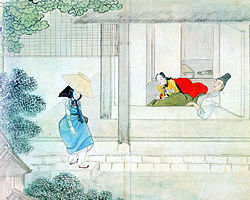
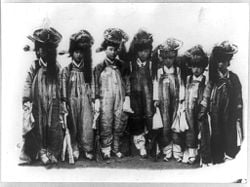
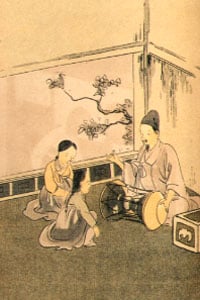
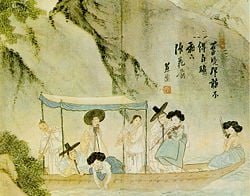
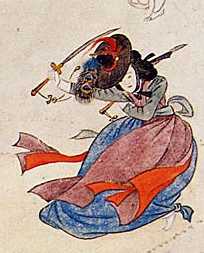
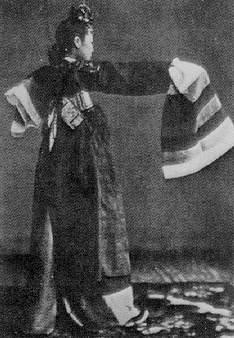

 KSF
KSF